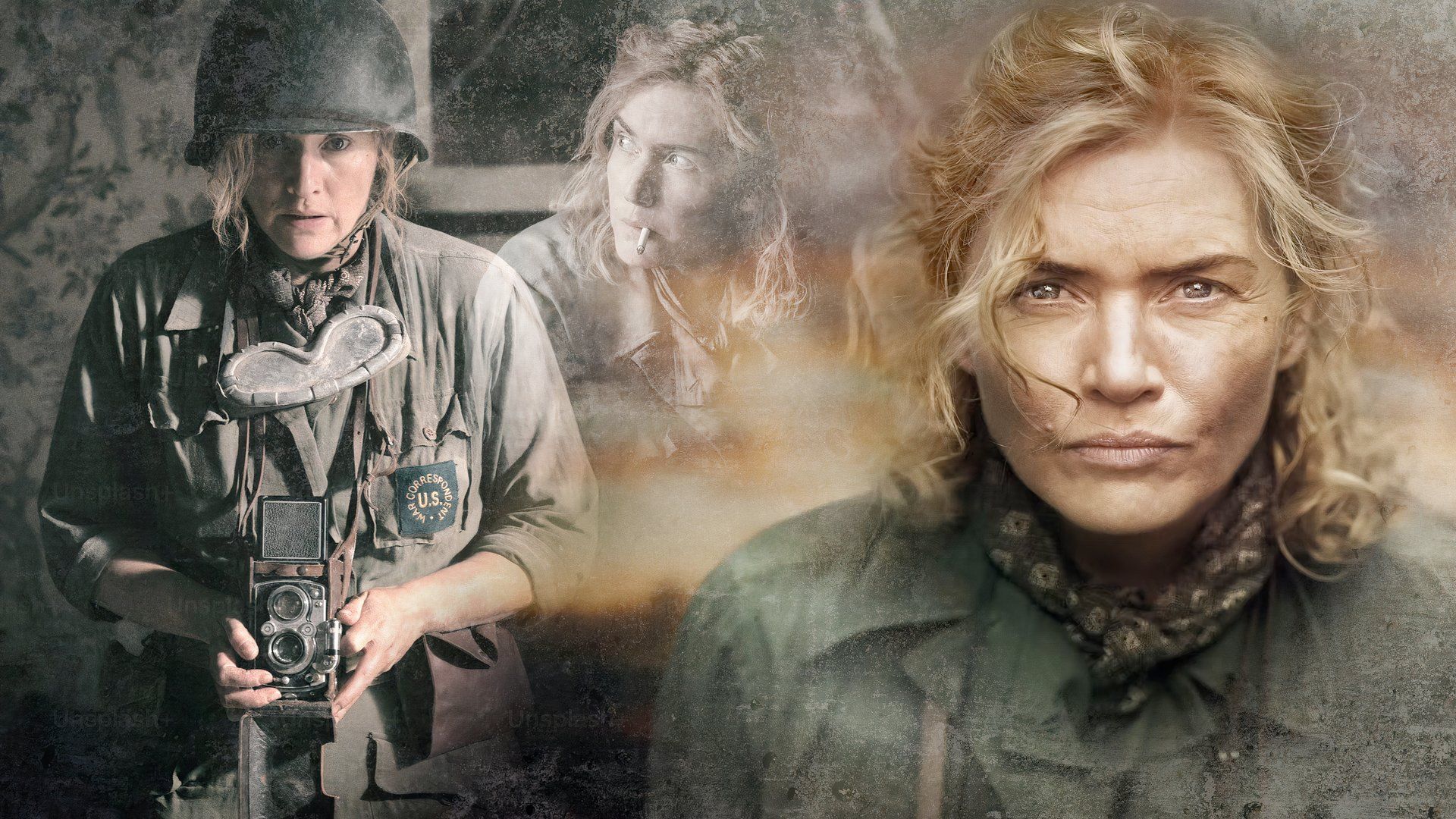Lee is a passion project from Kate Winslet that tells the story of former model and photographer Lee Miller. Lee focuses on Miller’s time in Europe during World War Two, documenting the realities of warfare for Vogue magazine. The movie introduces various aspects of Miller’s past, her personal life, and her overall influence on the world around her, but leaves a lot out. Lee lived multiple lives during her time on Earth, the details of which are almost too astonishing to be true.
From her upbringing in the United States to her international exploits, Miller’s spirit and strength paved the way for countless artists and journalists. She was the inspiration for designers, writers, and photographers for years to come as well, but to understand just how much of a force Miller truly was, here’s more about her life and her legacy.
Lee Miller Stumbled Into a Modeling Job and Turned It Into a Career in Art
Born in Poughkeepsie, New York, in 1907, Lee Miller became familiar with photography through her father, Theodore, and her brothers. She modeled for Theodore and her older brother, Johnny, a future pioneer in the world of aviation. After a volatile childhood, Lee moved to Paris to study stagecraft before returning to the United States to focus on drawing and painting at the Art Students League of New York in Manhattan.
It was while Lee was in Manhattan that fate crossed her path. As she went to step out into a busy street, Lee was nearly hit by a car. It was only through the intervention of Vogue publisher Condé Nast that Lee avoided catastrophe. This was also the start of her career in modeling.
Lee’s modeling career took off, and she returned to Europe in 1929. Once there, she met artist and photographer Ray Man. Lee later described their first encounter, “[Man] looked like a bull, with an extraordinary torso and very dark eyebrows and dark hair. I told him boldly that I was his new student. He said he didn’t take students, and anyway, he was leaving Paris… I said, I know, I’m going with you – and I did.” She then began modeling for Man, and they became lovers as well as creative collaborators.
Lee Miller Was Restless, Persistent, and Sought Out New Challenges
While in Paris, Ray Man and Lee Miller developed a technique called solarisation, which “involved exposing a partially developed photograph to light, before continuing processing, creating halo-like effects.” Consistent with the surrealist esthetics to which Man and Lee subscribed, there was also a symbolic juxtaposition of light and dark that matched the latter’s inner struggle.
Lee parted ways with Man in 1932, left Paris, and returned to New York City. She resumed taking photos and opened a studio. By 1934, Lee married Egyptian businessman Aziz Eloui Bey and the couple relocated to Cairo. Lee’s exploration of the world around her through the lens of a camera continued, but in a letter home to her brother, admitted she had developed a “loathing” of it for a time. She “took pictures of camels and sacks of cotton and hundreds of thousands of pigeons bred for manure” as well as individuals she met in the region.
In 1937, Lee returned to Europe, where she met Roland Penrose, a British painter and curator. They traveled, worked, and became lovers, but did not wed until Lee became pregnant in 1947. She gave birth to her son, Anthony, in October of that same year. She kept working after Anthony’s birth but also took up cooking and other activities, many of which she documented in Vogue.
Lee Miller Took Daring Photos Documenting World War Two
Lee Miller, who was in London when World War II began, became a war correspondent for Condé Nast Publications in 1942. Lee immediately got to work taking photos of nurses at a military base in Oxford. She continued to report on nurses throughout the war.
Lee dedicated herself to documenting war as history, providing honest, first-person accounts. She was sent to Normandy, France, about a month and a half after the D-Day landings for her first assignment on the European continent. She was supposed to photograph nurses, doctors, and wounded soldiers, but supplemented those with an entire article about what she saw.
“For an hour or so I watched lives and limbs being saved, by skill, devotion and endurance. Grave faces and tired feet passed up and down the tent aisles. We discussed whether doubling the staff of doctors and nurses would relieve them of overwork — it seemed not, as everyone by his own volition would still do double his duty.”
Lee’s best-known image from World War II was one she was featured in. As she cleaned herself in Adolf Hitler’s bathtub in Berlin, Life magazine’s David E. Scherman (Andy Samberg) caught the moment on film.
After the war, Lee took photos of men, women, and children in war-torn Europe, chronicling atrocities at every turn. Lee Miller’s photographs were powerful and groundbreaking for women and war journalism alike. Lee returned to England, but the war never left her. Lee’s mental health was affected by everything she saw, and she often turned to drinking as an escape. Lee Miller passed away at the age of 70 in 1977.
